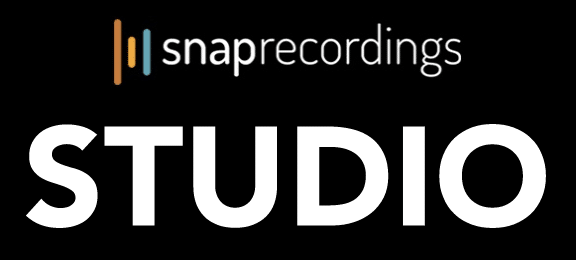Doing business in today’s climate of hybrid work environments, caller expectations for instant gratification, and the need for businesses to scale or pivot quickly reinforces just how valuable a cloud-based phone system can be for business continuity and to your caller experience.
Take COVID, for example. In the early days of the pandemic, without warning things like business hours, physical operations, and the ability to serve customers rapidly changed. Businesses that had previously adopted a cloud-first approach to communications were able to adapt quickly and use their phone system to communicate fluid changes with their callers. Those who hadn’t found that they lacked a critical piece of their business continuity strategy—a reality for an estimated 51% of businesses around the world.
When you need to communicate high-priority information to your callers, today’s cloud phone systems’ flexibility and power lie in its integrated message capabilities—greetings, announcements, prompts, and messages on hold. Here’s how you can leverage these capabilities to share critical information at scale and integrate them into your business communication strategy.

Greetings and announcements: provide a consistent caller experience
Your phone system greeting is the first thing callers hear. It allows businesses to provide a consistent caller experience and set the tone for the rest of the call. Professionally recorded greetings also provide clarity and consistency throughout every call.
Use greetings and announcements to communicate important information up front. For example, during the Coronavirus pandemic, a restaurant that closed their dining room but is still offering to-go orders through curbside pick-up could share this helpful information in their greeting. A doctor’s office or pharmacy that breaks for lunch can let callers know when they’re unavailable and when they will return. Banks offering PPE loans or pharmacies offering COVID testing may have experienced higher call volumes for these services. Instead of answering every call and repeating information, they can use greetings to direct callers to other sources of information, such as an automated announcement or a web page.
Any information that you repeat over and over with multiple callers is a good candidate for greetings and announcements. Sharing essential details early can help to reduce wait times, provide information around the clock, and reduce the load on your staff.
Menu prompts: provide a better caller experience
Menu prompts provide a better caller experience by ensuring your callers are routed to the right agent or other informational resources. There’s less confusion when calls are routed appropriately and customers can be served in a more timely manner.
Menu prompts can also direct callers to announcement-only messages, where you can provide your business address, operating hours, and event or product information. Some cloud phone systems offer more advanced IVR features that automate common requests and transactions like checking a bank account balance, booking a hotel, filling in a survey, or requesting a prescription refill.
Something to keep in mind is that as callers’ needs and business priorities change, your menu prompt options will need to adjust, too. For example, If you’ve recently implemented a new service or product, such as offering patient virtual care or curbside pickup for your restaurant, you may need to record new prompts to route calls efficiently. Or, if you are promoting a limited-time offer and expect call volume to temporarily increase, you can utilize your phone system automation and use your announcement-only feature to provide the information related to that offer.
Many businesses during the pandemic saw the need to adapt their prompts to current conditions. Companies may have set up new menu options for COVID-related calls to direct traffic away from other call center queues and avoid long caller wait times. This was common for banks offering PPE loans. Pharmacies such as Walgreens and CVS offering services like on-site COVID testing and vaccinations used their menu prompts to call out these services and direct callers to a webpage to book an appointment and answer commonly asked questions.
As your business needs change, cloud capabilities allow you to quickly adapt the caller experience to align with current requirements.

Messages during hold times: communicate with callers at scale
Hold time is a unique opportunity for companies to communicate with callers at scale. Playing music and messages during hold times has been proven to reduce hangups, ease caller frustration, and keep callers on the line for longer. You have a targeted, captive audience on the line, listening. Leverage this “dead air” to increase sales, answer commonly asked questions, and provide value to every caller.
For instance, if you’re experiencing a high call volume, the right hold message can help to reduce callers’ time on the line. You might remind them to have their account ID ready or disclose other information you’ll need to help them. Or, if you’re running a special promotion or introducing a new product, use hold time to talk about it and increase sales.
One of the advantages of cloud phone systems is that you can customize your hold messages by queue or extension. For example, someone calling to cancel their reservation at your resort likely doesn’t want to hear about your timeshare tours, but someone calling to make a new reservation might.
Cloud technology makes it easy to match your messaging with caller intent to deliver relevant information to your callers. The right tools to create and manage these messages make the process even easier.
RingCentral’s integration with Snap Recordings’ new Studio app and AMS platform simplifies this process even further. Studio uses the power of AI to help you create broadcast-quality phone messages in minutes, while AMS, Snap Recordings’ enterprise-grade audio management system, simplifies and automates the deployment of messages directly to your phone system. A tedious process that used to take countless hours can be done in minutes, allowing you to adapt your business messaging strategy to evolving situations.
Scaling your caller experience in real-time with cloud
Many of the messaging tasks in cloud phone systems can be managed without a tech. If you can upload a digital audio file, you should be able to manage your caller experience with ease. By comparison, many legacy on-premises systems offer capabilities like message on hold, greetings, and IVR prompts, but they are not as flexible or scalable and often require technical expertise.
Integrated business communications solutions like RingCentral put you in the driver’s seat of your communications. Choose which features and messages you need, turn off the ones you don’t, and make changes to your messaging in real-time.
Cloud-driven tools like RingCentral’s exclusive integration with Snap Recordings’ new AMS platform is designed to make it easier to gain visibility into what’s playing to callers throughout your phone system.
The speed, mobility, and ease of use that cloud communications offer are unmatched by traditional on-premises telephone systems. Businesses that weren’t prepared for continuity during the pandemic can use this learning experience to fill the gaps and become more resilient moving forward. And with the tips above, every business can start to make better use of their phone system messaging features to improve the way they talk to their customers in the cloud.
About Snap Recordings
Snap Recordings is the industry leader in voice messaging solutions for business phone systems and contact centers. We provide professional, broadcast-quality voice recordings for phone greetings, menu prompts, and messages on hold, along with a robust suite of audio products that take the chore out of creating and updating your phone system messages.

Originally published Jun 01, 2021, updated Nov 03, 2023





